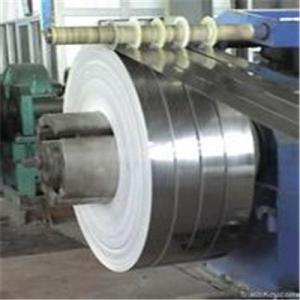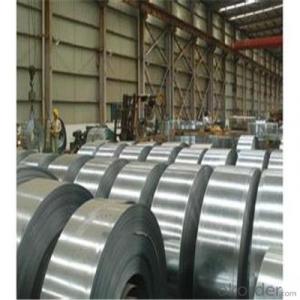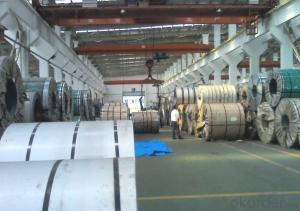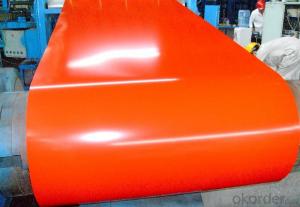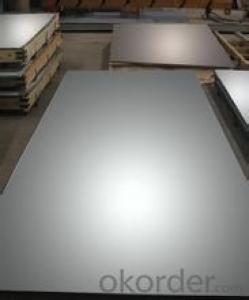Steel Strip Coils Q195 Q235 Professional Manufacturer in China
- Loading Port:
- Shanghai
- Payment Terms:
- TT OR LC
- Min Order Qty:
- 44 m.t.
- Supply Capability:
- 4433222 m.t./month
OKorder Service Pledge
OKorder Financial Service
You Might Also Like
Item specifice
Applications of Steel Strip Coils:
1:Chemical industry equipment, Industrial tanks
2:Medical Instruments,Tableware, Kitchen utensil,kitchen ware
3:Architectural purpose, Milk & Food processing facilities
4:Hospital Equipment, interior Exterior decoration for building
5:Architectural purposes, escalators, kitchen ware,vehicles
Festures of Steel Strip Coils:
1. Each coil is closely covered by oil paper or plastic film.
2. Outside it is firmly packed with sack cloth or compound paper.
3. Steel strap or PP strap to pack the outside to ensure safety.
Specifications of Steel Strip Coils:
| Description | Hot Rolled Steel Strip |
| Brand | Tianjin Metallurgical No.Steel Group |
| Specification | 1.2-6.0mm*70mm |
| Standard | AISI,ASTM,BS,DIN,GB,JIS |
| Material | Q195,Q215,Q215B,Q235,Q235B |
| Application | Widly used in welding steel pipes, and bicycle making etc. |
| Certificates | BV,SGS,ISO etc. |
| MOQ | 20 tons or according to customers’ requirement. |
| Port of Delivery | Tianjin Port of China |
| Remarks | We can provide qualify goods,competitive price and speedy delivery |
Images of Steel Strip Coils:
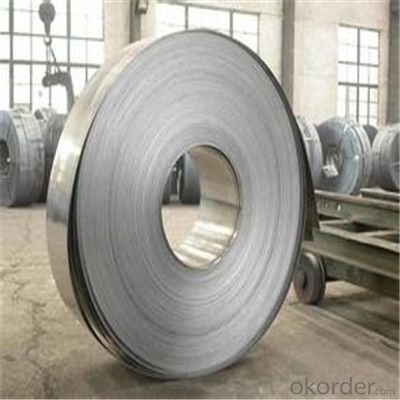
FAQ
1.What's your MOQ?
25MT, it is for one container.
2.Do you have QC teams?
Yeah, sure, our QC team is very important, they will keep the quality control for our products.
3. What's your normal delivery time?
Our delivery time about 10-20days for standard sizes, if you have other requirements like hardness and width ,it is about 20-40days.
- Q:How are steel strips used in the production of household tools?
- Due to their durability and strength, steel strips find widespread use in the manufacturing of household tools. These strips serve as raw materials for various tools such as screwdrivers, wrenches, pliers, and hammers. Typically, steel strips are cut into specific lengths and widths before undergoing further processing to shape them into the desired tools. Manufacturers can bend, stamp, or forge these strips to create the necessary components for the tools. For instance, the strips may be bent to form the handles of screwdrivers or pliers, or they may be stamped into the jaws of a wrench. The use of steel strips in tool production offers several advantages. Firstly, steel is a robust material capable of withstanding significant force and pressure, making it ideal for heavily used tools. Secondly, steel exhibits high resistance to corrosion, ensuring that the tools remain in excellent condition even in harsh environments. Moreover, steel strips can be easily molded and shaped, allowing manufacturers to create tools with precise dimensions and intricate designs. This versatility in shaping steel strips enables the production of tools with ergonomic handles, textured surfaces for enhanced grip, and various other features that improve user comfort and efficiency. In conclusion, steel strips play a vital role in the production of household tools, providing durability, strength, and corrosion resistance. Their versatility allows manufacturers to create tools with precise dimensions and designs, resulting in high-quality and dependable products for everyday use.
- Q:How are steel strips used in the marine industry?
- Steel strips are commonly used in the marine industry for various applications such as shipbuilding, repair, and maintenance. They are used to construct the structural framework of ships, including hulls, decks, and bulkheads. Steel strips also play a vital role in reinforcing and strengthening ship components, such as beams, frames, and braces. Additionally, they are used for fabricating marine equipment, such as cranes, winches, and anchor chains. The corrosion-resistant properties of steel strips make them ideal for withstanding the harsh marine environment, ensuring the durability and longevity of marine structures and vessels.
- Q:What are the different methods of joining steel strips together?
- There are several methods of joining steel strips together, each with its own advantages and applications. Some of the common methods include welding, bolting, riveting, and adhesive bonding. Welding is the most widely used method for joining steel strips. It involves melting and fusing the edges of the strips together using heat and pressure. Welding provides a strong and permanent bond, making it ideal for structural applications. Different welding techniques such as arc welding, gas welding, and laser welding can be used depending on the thickness and type of steel. Bolting is another method where steel strips are joined together using bolts, nuts, and washers. This method offers the advantage of easy disassembly and reassembly, making it suitable for applications that require frequent maintenance or adjustments. Bolting is commonly used in the construction industry for connecting steel beams and plates. Riveting involves driving a rivet through the overlapping steel strips and then deforming the end to create a permanent joint. This method is mainly used for connecting thin-gauge steel strips and provides a reliable and visually appealing joint. Riveting is commonly employed in the automotive and aerospace industries. Adhesive bonding is a method where a specialized adhesive is applied between the steel strips to create a strong bond. This method is particularly useful when joining dissimilar metals or when welding is not feasible due to material constraints. Adhesive bonding also offers the advantage of distributing stress evenly across the joint, reducing the risk of fatigue failure. Each method of joining steel strips has its own strengths and limitations, and the choice depends on factors such as the specific application, material properties, required strength, and environmental conditions. It is important to carefully evaluate these factors before selecting the most suitable joining method for a particular project.
- Q:Can steel strips be used in the aerospace industry?
- Yes, steel strips can be used in the aerospace industry. They are commonly used for various applications such as structural components, fasteners, and support brackets. Steel strips offer high strength, durability, and heat resistance, making them suitable for aerospace manufacturing and maintenance.
- Q:Are steel strips suitable for the manufacturing of agricultural equipment?
- Yes, steel strips are suitable for the manufacturing of agricultural equipment. Steel is known for its strength, durability, and resistance to wear and tear. These qualities make it ideal for agricultural machinery that experiences heavy use and requires robust construction. Additionally, steel strips can be easily shaped and formed into various components, providing versatility in design and functionality.
- Q:Are steel strips commonly used in the manufacturing of appliances?
- Yes, steel strips are commonly used in the manufacturing of appliances due to their strength, durability, and ability to withstand high temperatures. They are often used for making the exteriors, frames, and internal components of various appliances such as refrigerators, ovens, and washing machines.
- Q:How are steel strips used in the manufacturing of sporting goods?
- Steel strips are used in the manufacturing of sporting goods in various ways. They can be used as a core material for reinforcing and strengthening equipment such as tennis rackets, golf clubs, and hockey sticks. Steel strips are also utilized in the construction of frames for bicycles and exercise equipment, providing durability and stability. Additionally, they can be used in the production of springs and fasteners for sporting goods, ensuring secure and reliable performance.
- Q:How are steel strips processed for load-bearing capacity?
- Steel strips are processed for load-bearing capacity through various techniques such as heat treatment, cold rolling, and alloying. Heat treatment improves the steel's strength and hardness by subjecting it to controlled heating and cooling processes. Cold rolling reduces the thickness and increases the strength of steel strips by passing them through rollers at low temperatures. Alloying involves adding specific elements to steel to enhance its mechanical properties, such as increasing its resistance to corrosion or improving its ability to bear heavy loads.
- Q:How are steel strips priced and sold?
- Steel strips are typically priced and sold based on several factors. Firstly, the cost of the raw materials used to produce the steel strips, such as iron ore and other alloys, plays a significant role in determining the price. Fluctuations in the prices of these materials can directly impact the pricing of steel strips. Additionally, the manufacturing process and overhead costs involved in producing steel strips influence their pricing. This includes expenses related to labor, energy, equipment, and transportation. Quality standards and certifications, such as ISO certifications, can also affect the price as they ensure the product meets certain criteria. Market demand and competition also play a role in pricing steel strips. Higher demand for steel strips can lead to increased prices, especially when supply is limited. Conversely, if there is low demand or excess supply, prices may be more competitive. Steel strips are typically sold through various channels, including steel service centers, distributors, and directly from manufacturers. Steel service centers and distributors act as intermediaries, purchasing steel strips in bulk from manufacturers and reselling them to end-users. They often offer additional services such as cutting, slitting, or customizing the steel strips based on customer requirements. Direct sales from manufacturers are also common, particularly for larger orders or when customers have specific preferences or requirements. Manufacturers may have their own sales teams or work with agents or representatives to facilitate the sale of steel strips. In summary, steel strip pricing is determined by factors such as raw material costs, manufacturing expenses, quality standards, market demand, and competition. The sales of steel strips can be carried out through steel service centers, distributors, or directly from manufacturers.
- Q:What are the specifications for steel strips used in the production of conveyor belts?
- The production of conveyor belts requires different specifications for the steel strips, which can vary depending on the specific needs of the application. However, there are some general specifications commonly used in the industry. 1. Material: High-quality carbon steel or stainless steel is typically used for the steel strips in conveyor belts. Carbon steel is more commonly used due to its strength and cost-effectiveness, although stainless steel may be preferred in applications where corrosion resistance is crucial. 2. Thickness: The desired strength and durability of the conveyor belt determine the thickness of the steel strip. The thickness usually ranges from 0.4mm to 3mm, although thicker strips may be used for heavy-duty applications. 3. Width: The width of the steel strip is determined by the width of the conveyor belt itself. It can vary from a few centimeters to several meters, depending on the specific application. 4. Surface Finish: The surface finish of the steel strip can be plain or coated. Coatings such as zinc or chrome may be applied to enhance the strip's corrosion resistance. 5. Tensile Strength: The steel strip's tensile strength is a crucial specification as it determines the maximum load the conveyor belt can handle. Typical tensile strength ranges from 500 MPa to 1500 MPa, depending on the application. 6. Hardness: The wear resistance of the steel strip is influenced by its hardness. In high-wear applications, hardened strips are often used to improve the conveyor belt's longevity. 7. Edge Condition: The edges of the steel strip can be either slit or deburred. Slit edges are more commonly used as they provide a smoother surface for the conveyor belt to run on. It is important to note that these specifications are not exhaustive and may vary depending on the specific requirements of the conveyor belt application. For more detailed and customized specifications, consulting a steel strip manufacturer or conveyor belt supplier is recommended.
1. Manufacturer Overview |
|
|---|---|
| Location | |
| Year Established | |
| Annual Output Value | |
| Main Markets | |
| Company Certifications | |
2. Manufacturer Certificates |
|
|---|---|
| a) Certification Name | |
| Range | |
| Reference | |
| Validity Period | |
3. Manufacturer Capability |
|
|---|---|
| a)Trade Capacity | |
| Nearest Port | |
| Export Percentage | |
| No.of Employees in Trade Department | |
| Language Spoken: | |
| b)Factory Information | |
| Factory Size: | |
| No. of Production Lines | |
| Contract Manufacturing | |
| Product Price Range | |
Send your message to us
Steel Strip Coils Q195 Q235 Professional Manufacturer in China
- Loading Port:
- Shanghai
- Payment Terms:
- TT OR LC
- Min Order Qty:
- 44 m.t.
- Supply Capability:
- 4433222 m.t./month
OKorder Service Pledge
OKorder Financial Service
Similar products
New products
Hot products
Related keywords

